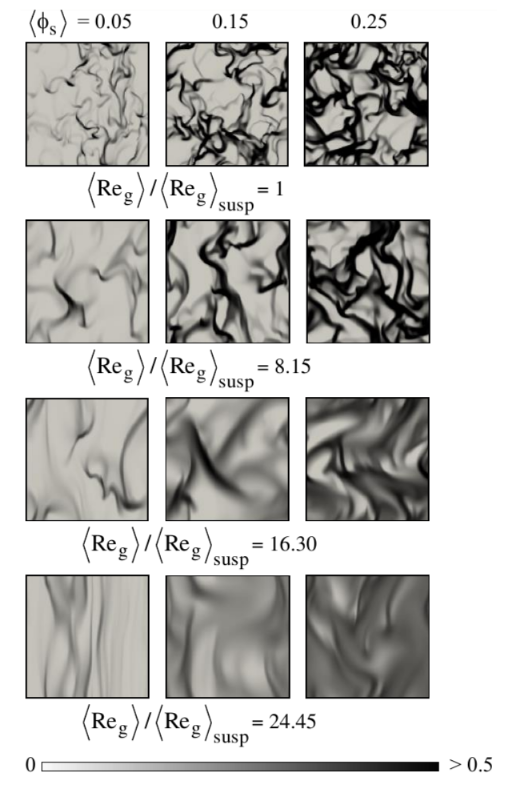
Joseph Mouallem
Computational Scientist / Research Software Engineer
Focus area:
-
-
-
-
-
-
-
-
-
- Dynamical Core development and algorithm implementation
- Multiple same level and telescoping grid nesting
- Duo-Grid and grid imprinting
- FV3 & SHiELD reproducibility and regression testing
-
-
-
-
-
-
-
-
Education and training:
-
-
-
-
-
-
-
-
-
- B.Sc. Mechanical Engineering, ULFG2, Lebanon
- M.Sc. Fluid mechanics, INSA Lyon, France
- Ph.D. Thermal and Fluids, University of Sao Paulo, Brazil
- Postdoctoral fellow and sessional lecturer, University of Waterloo, Canada
-
-
-
-
-
-
-
-
FV3 team
Contact Information:
Joseph.Mouallem@noaa.gov
mouallem@princeton.edu
Implementation of the Novel Duo-Grid in GFDL’s FV3 Dynamical Core
The gnomonic cubed-sphere grid has excellent accuracy and uniformity, but the ‘kink’ in the coordinates at the cube edges in the halo region can leave an imprint of the cube in the solution, and requires special edge handling. To reduce grid imprinting, we implement the novel ‘Duo-Grid’ within FV3. The Duo-Grid remaps a cube face’s data from neighboring face from kinked to natural locations along great circle lines using 1D piecewise linear interpolation. A 2D interpolation algorithm is used to fill correct data at the eight corners of the cubed-sphere needed for FV3’s 2D advection scheme. The Duo-Grid was tested in idealized tests using the 2D shallow water solver and the 3D hydrostatic and non-hydrostatic solvers: Rossby-Haurwitz wave lasts longer and the southern hemisphere of the baroclinic wave test is noise free. We found that error norms are greatly reduced and grid imprinting is practically eliminated when employing the Duo-Grid. These results indicate that FV3’s robustness has improved.
DOI: https://doi.org/10.1029/2023MS003712
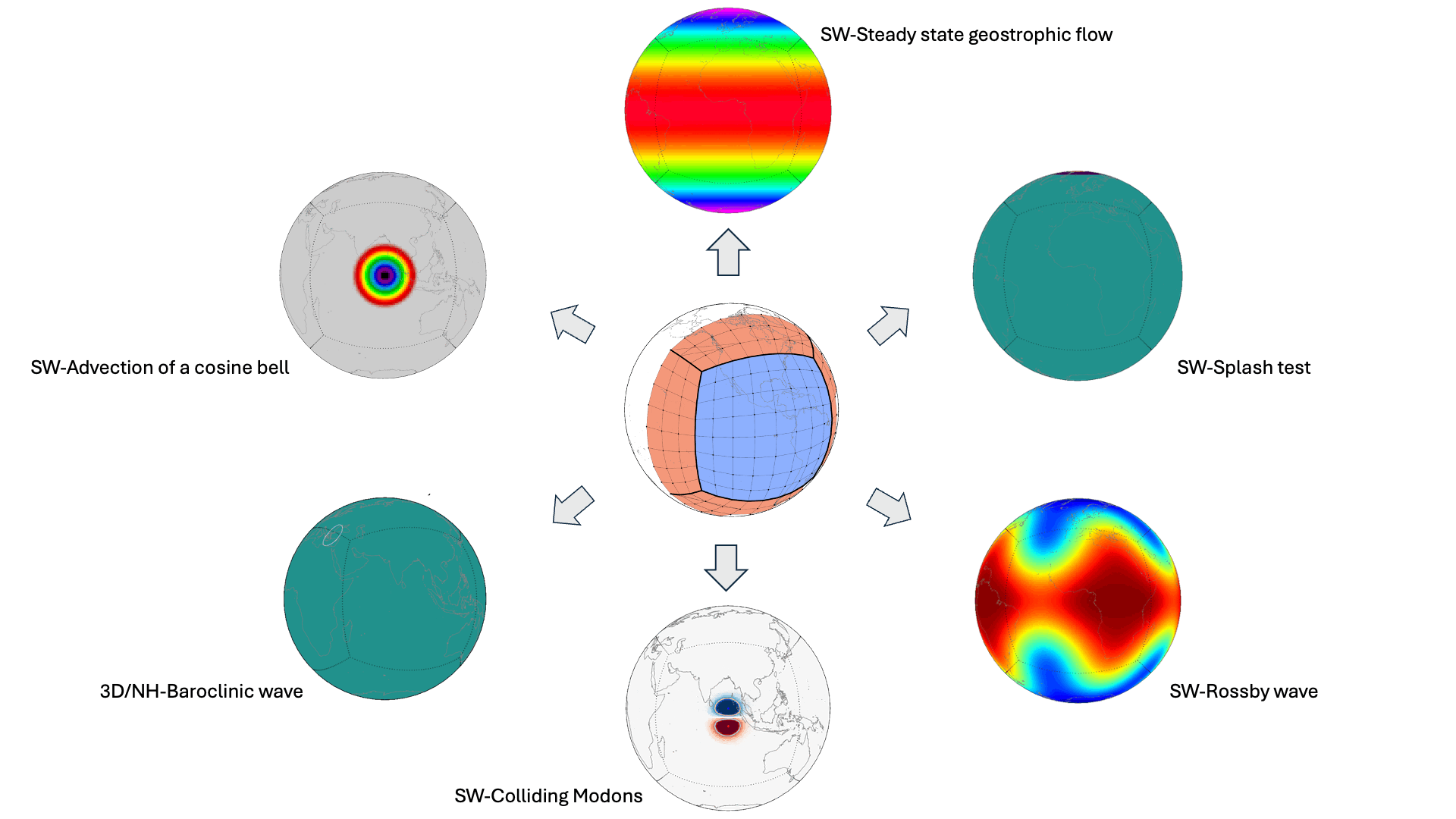
Multiple same-level and telescoping nesting in GFDL’s dynamical core
Two-way multiple same-level and telescoping grid nesting capabilities are implemented in FV3 using GFDL’s Flexible Modeling System (FMS). A nest is an additional grid that zooms in over a region of interest to resolve small-scale structures necessary to get a better forecast of localized weather events such as severe storms and hurricanes. A telescoping nest is a nest within a nest. The nested grids run concurrently on different sets of processors and interact with their parent grids, thus providing more accurate results on both grids and reducing load imbalances between different processors. Nests could be used in global and regional domains. Starting from the latest FV3 public release of 2021, multiple same level and telescoping nests are now fully functional and available for use by the broader scientific community. This will drastically improve the overall forecast performance, bringing unprecedented accuracy, and open the door to numerous research possibilities for scientists and meteorologists alike.
DOI: https://gmd.copernicus.org/articles/15/4355/2022/
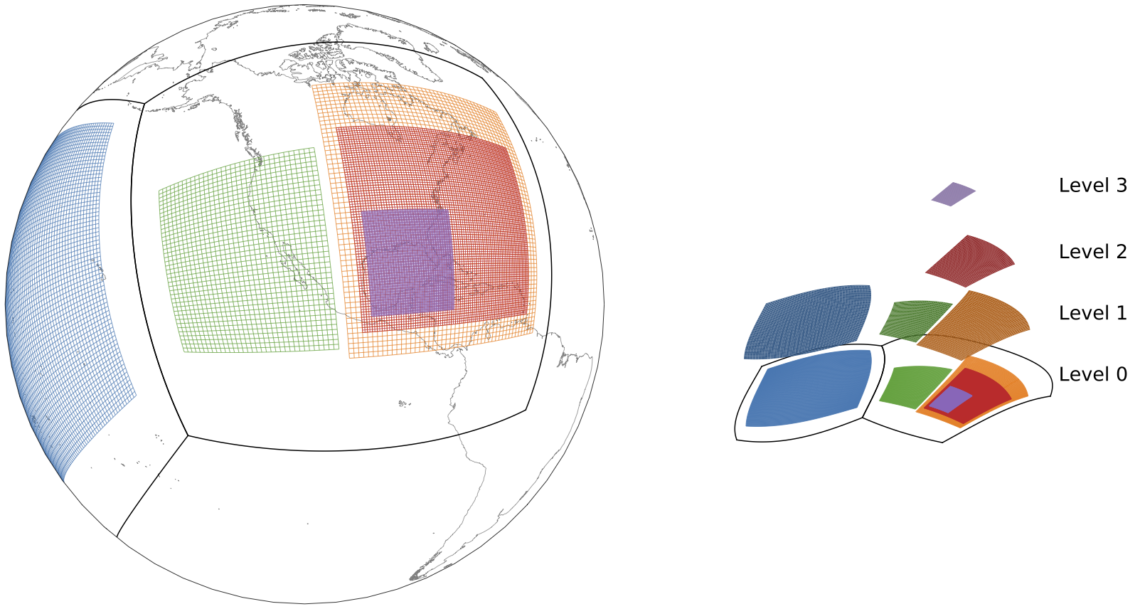
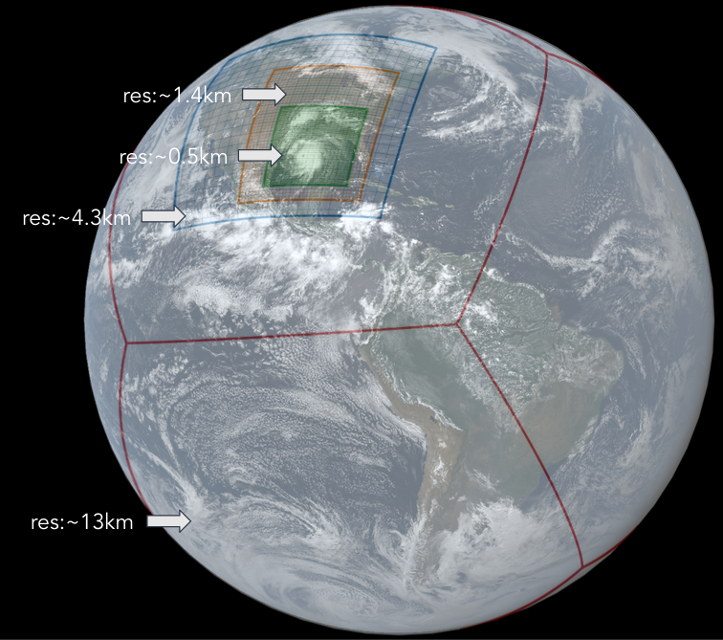
Some previous works:
Targeted particle delivery via vortex ring reconnection:
A conceptual model for targeted particle delivery is proposed using controlled vortex ring reconnection. Entrained particles can be efficiently transported within the core of vortex rings which advect via self-induction. A pair of these particle-transporting vortex rings traveling in the streamwise direction along parallel trajectories will mutually interact, resulting in a pair of vortex reconnection events. The reconnection causes a topological change to the vortex ring which is accompanied by a rapid repulsion in a perpendicular plane to the direction of travel, effectively transporting the particles toward the desired location on the sidewalls of a ducted flow. In addition to proposing this conceptual model, we show the dominant physics of the process and the considerations for targeted delivery.
DOI: https://doi.org/10.1063/5.0066443
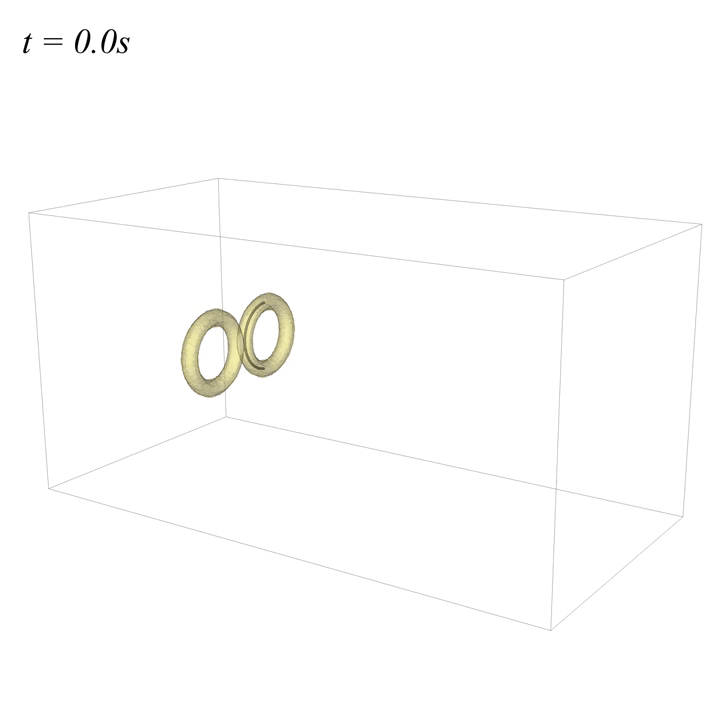
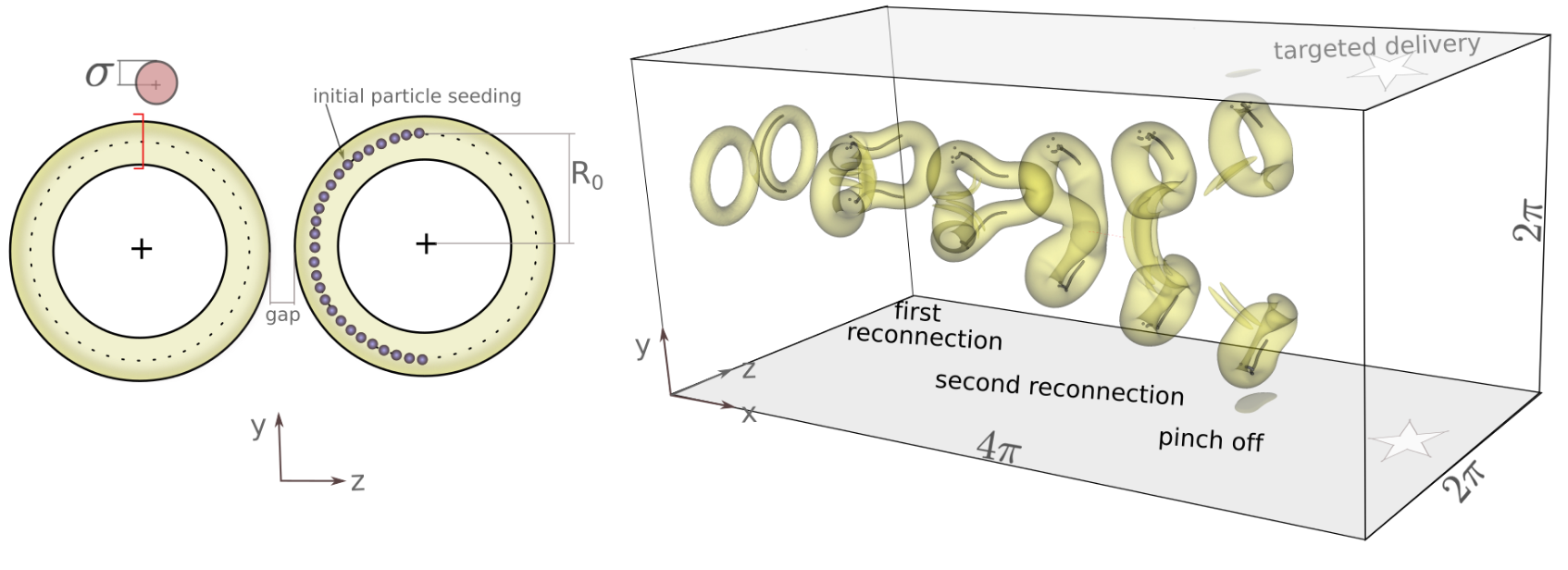
Induction heating of dispersed metallic particles in a turbulent flow:
Inductively-heated solid particles dispersed within a decaying isotropic turbulent carrier gas are investigated via Direct Numerical Simulations (DNS). The multiphase simulations account for the compressibility and temperature-dependent viscosity effects of the carrier gas. We develop a semi-empirical model for solid particle heating through hysteresis and Joules mechanisms as these dispersed particles are inductively heated by an external high-frequency alternating magnetic field. The present study focuses on the characteristic time scales of the induction heating and thermal transport of the gas and their modulating effects on the turbulence. We show that the growth of the Kolmogorov length scale is due to a simultaneous increase in viscosity and decrease in the dissipation rate. The temperature-dependent viscosity of the gas leads to a faster decay of the gas turbulent kinetic energy, mainly due to a decrease of energy at intermediate wavenumbers. The evolution of the gas and particle thermal fluctuations are inversely correlated based on the relative thermodynamic timescales. By investigating the change in the temperature spectrum, two regimes could be identified. A first regime arises as the thermal fluctuations increase in time and is defined by a monotonic increase of thermal energy in the low wavenumber range; as the thermal fluctuations decrease in the second regime, the decay occurs over the entire spectrum. Furthermore, aggressive heating set by lower induction heating timescales results in a decrease in particle clustering whereas the particle thermal response time did not show any effect.
DOI: https://doi.org/10.1016/j.ijmultiphaseflow.2020.103414

On the effects of the flow macro-scale over meso-scale filtered parameters in gas-solid riser flows:
Filtered two-fluid formulations of gas–solid fluidized flows require closure models to deal with sub-grid filtered parameters, which have been derived from filtering over results of meso-scale highly resolved simulations with two-fluid modeling. Trusting on scale separation, the correlation of filtered parameters has been performed to meso-scale filtered data only, disregarding any macro-scale effects. In this work, the correctness of such practice is tested, and it fails. Two macro-scale parameters associated to flow topology, namely the average solid volume fraction and the average gas Reynolds number, are both considered as for their effects over relevant filtered parameters. This is done by filtering over results of highly resolved simulations, where the concerning macro-scale parameters are held constant at various levels. The current interest is directed towards dilute conditions typical of riser flows. Results show that both the concerning macro-scale parameters should be accounted for in sub-grid correlation if higher accuracy is pursued.
DOI: https://doi.org/10.1016/j.ces.2018.02.039
